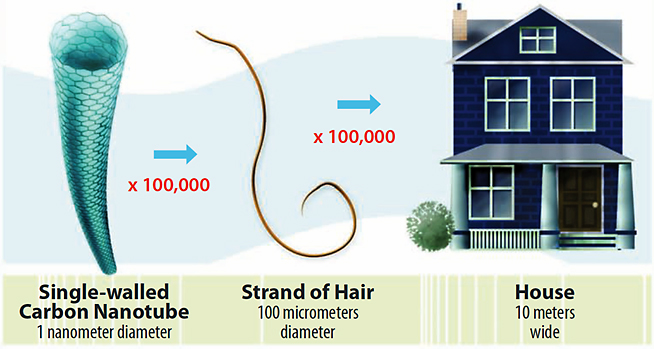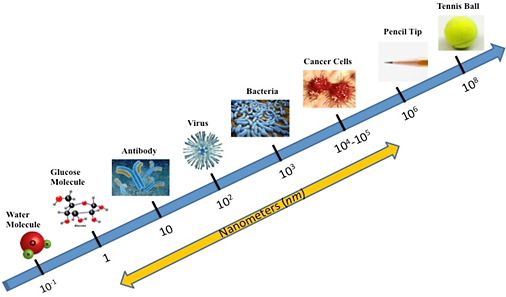
|
Introduction Nanometry education is the creative art of illustrating, the science of exploring, and the process of understanding measurements of materials at the nanoscale in teaching and learning [1]. Nanoscale materials continue to impact science and technology in the twenty-first century. The US federal government has invested billions of dollars in research and development efforts in this rapidly growing field, not to mention the many millions of dollars invested in curricular reform efforts in education involving nanoscale materials [2]. However, teaching about matter at the nanoscale at K-12 still remains a challenge since teachers-in-training themselves find it difficult to comprehend this concept [3, 4]. For example, a study of 109 undergraduate science education students reported item difficulty (proportion of students answering correctly) values 0.257 and 0.073 respectively [4] for the following two items [5]: (1) If a nanometer were about as big as the width of a pinhead, about how long would a meter be? (a) as long as the pin shaft, (b) as long as a ladder, (c) as long as a blue whale, (d) as long as a trip between Washington, D.C., and Atlanta, Georgia and (2) How many hydrogen atoms lined up “shoulder to shoulder” would fit in a one nanometer space? (a) less than one, (b) ten, (c) one thousand, (d) one billion. Benchmark Characteristics An understanding of the scale of a wide range of seen and unseen objects is critical because "scale is one of the thematic threads that runs through all of the sciences" [6, p. 409]. Using carefully identified benchmark characteristics of objects may be one way to create a meaningful context for students to visualize the nanoscale in nanometry education. For example, the width of an average house (10m) is 100,000 times larger than that of an average human hair (100μm) the diameter of an average human hair is 100,000 larger than that of a single-walled carbon nanotube (1nm) (National Center for Electron Microscopy, n.d.) (Figure 1).
Another set of benchmark characteristics of objects is presented in Figure 2, where the scale ranges from 0.1nm (water molecule) to 100,000,000nm (tennis ball). Such illustrations help to form mental pictures of objects invisible to the naked eye and play a significant role in the formation of mental associations during learning. Also, they are useful tools for integrating science at the nanoscale with overlapping mathematical concepts [7].
Final Thoughts It takes a high level of imagination to visualize nanoscale materials and to infer their characteristics in relation to visible objects. Using mathematical relationships that are suitable for understanding the scale conversions may not be easy for those who tend to distance themselves from mathematics. Carefully developed nanometry education activities can help children even as early as at elementary grade levels develop mathematical as well as scientific thinking skills suggested by the National Council of Teachers of Mathematics (NCTM) and National Science Education Standards (NSES). For example, NCTM Grades 3–5 Expectations state all students should “understand the place-value structure of the base-ten number system and be able to represent and compare whole numbers and decimals.” Therefore, it is necessary that realistic, meaningful teaching methods that enable students to visualize and infer the scale of the world of nano materials be developed and implemented in science classrooms. Teachers-in-training should be given pedagogically relevant opportunities for discussing and developing cognitively engaging ways of teaching nanometry in science classrooms. In order to fully take advantage of the pedagogical benefits of education involving nanoscale materials and contribute towards STEM workforce development, it is highly important that nanometry education be made an integral part of STEM teaching and learning. Acknowledgment Thanks to Chelsea Dittrich and Sylvia Collazo for thoughtful feedback and to Ramzy Baroody for assistance with the scale of benchmark characteristics of objects. References
|

